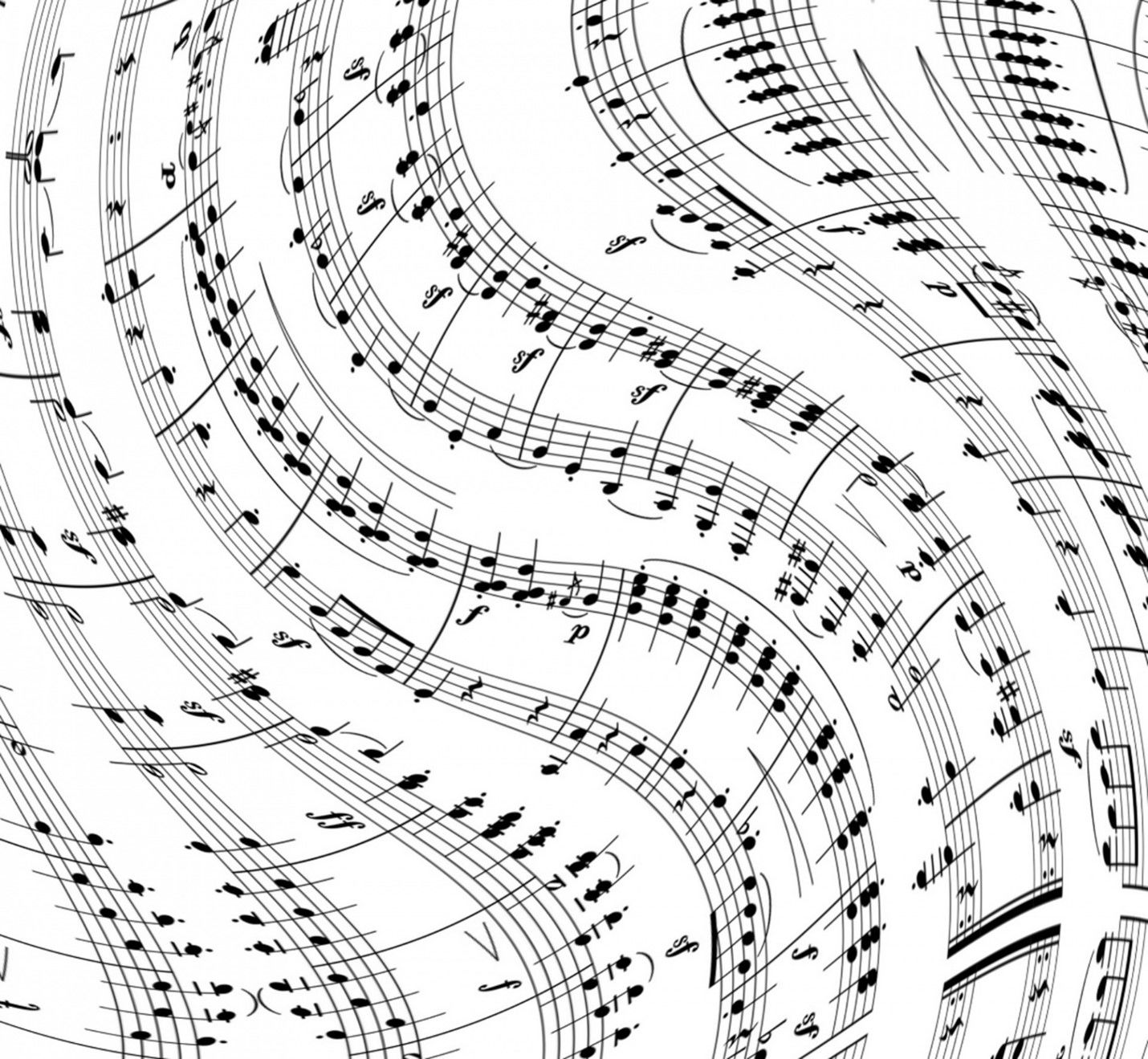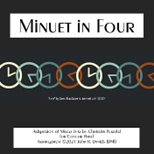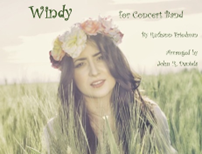How to Add Spice to a Concert Band Arrangement

(For those of you who do better with letter chords, I’ve “translated” the chord numbers whenever it was appropriate.)
A lot of concert bands, especially high school bands, tend to sound alike, unless they have a higher than normal number of advanced players, which is rare. So, how would I take an average high school concert band and arrange for it so that it sounds better than it is?
The first thing to NOT do is throw the baby out with the bath water. That is, a concert band has a certain sound, different than an orchestra (that has strings) or a rock/pop/country band (with guitars). I find that in order for a listener to enjoy a piece of music, no matter what style, the arrangement has to lay an audio foundation so that any variations will be heard as variations and not the main melody. In music-speak, a good concert band arrangement must have a good exposition so that any variations will be recognized as variations and not the main motif(s).
So, it is useful to put the sound of a concert band to work at the beginning of a piece to lay the groundwork. Often, that means most or all of the instruments would be playing, unless it’s a very special piece. And, the laying of that revelation of the main idea doesn’t have to take very long.
It would be good to differentiate here between a more literal arrangement and a more creative arrangement. If a band director wanted a concert band arrangement of a popular movie or TV theme so that it sounded like the original as much as possible, there wouldn’t be much room for “spicing it up”. If the director wants an arrangement to show off the band’s skills or maybe even a concerto-style arrangement to show off certain players or sections, then the arranger has a lot more leeway in what might be called an artistic arrangement.
Techniques for General Arrangements or Literal Arrangement.
- The first, and easiest, thing is to pass the musical elements (melody, harmony and rhythm) among the sections. Different instruments each have their own “personality”. Clarinets are often perky, French horns are generally more somber, trumpets often can’t help but be flashy. Of course, as with people, it’s not nice to generalize, but you get the idea. If the song normally has lyrics, the instrument used could reflect the mood of a particular verse. If the song is normally an instrumental, it would be interesting to see how each section might express each musical element.
- Another technique, somewhat related to the first, is to use smaller groups of instruments to play each element. A single woodwind of each type (flute, clarinet, etc.) or first chair of each section could play the parts. This gives the music a more “transparent” feel. It would sound more the way a medieval group would.
- Dynamics, articulations and ornamentations can also add spice to a concert band arrangement, especially if the original was played on a synthesizer, guitars, strings or other non-band instruments. A variation of the tempo might also be used, if it wouldn’t detract from the original motif.
Techniques for an artistic arrangement
- The first is alternate chords. I love alternate chords. I have seen at least four different arrangements of the hymn Amazing Grace in hymnals. The oldest had basically one chord; a second chord made two very brief appearances (G, C). A later one had 3 chords; it was nice, and a definite improvement on the first (G, C, D). Two of them after that had extra chords, such as a minor 6 (Em), a tonic 7 to lead to the 4 (G7 to C), even a secondary dominant (A). The melody was exactly the same, but now the song “moved”, even though it was the same basic tempo as the original. There are two basic ways to use alternate chords.
- One is to use a chord with a different root (a C instead of an A). In many situations a minor 2 or flat 7 can replace a 5 chord (In G, use an Am or F chord). In other situations, a major 3 or a major 6 can replace a 1 chord, although it’s best to use the 1 chord first to establish the key center in the listener’s mind. (In G, start with a G, then go to B or E).
- The other way to use alternate chords is to “dress up” what’s already there. A 17 “leads” the listener’s ear to a 4 (In C, C7 to F) just as a 57 “leads” the ear to a 1 (In C, G7 to C). Suspensions are another way to add some tension; the most common is the suspended 4, but a suspended 2 or 5 is effective. Then, there are the major 7s and 9s (or 2s). And for real zing, a well-placed augmented or diminished chord can’t go wrong. Remember, art is partially defined by its use of tension and release. If there is no tension, there’s no art; it’s just another boring song.
- The next is alternate time signatures. Some songs are good in almost whatever meter they are played. One example is How Gentle is the Rain by a 60s girl group called The Toys. It’s a variation on J. S. Bach’s Minuet in G. The original is in 3/4 while the remake is in 4/4. Salt cellar Creations has a great arrangement of that song for sale entitled Minuet in Four.

- Another technique would take a little extra work because it involves using a different style. Some songs are stuck in their style because the style defines the song. I’m not sure that any rap, hip hop or techno songs could be done as a ballad or a folk song. And a song written as a waltz or polka probably wouldn’t convert well to a rock or pop tune. You get the idea. But there are a lot of songs that can easily be transformed from style to another. A good example of changing a style is by comparing two versions of the song Help, originally by the Beatles. Now hear how the Carpenters remade it. And I discovered this remake by the group Deep Purple. Each is great in its own way.
I did an arrangement of Windy by a group called The Association for our high school’s concert band. It’s relatively simple (I was only 16) but it shows off some possibilities of how to add that spice to a band arrangement. Here is a description of some of the techniques I used. - The opening line is a tuba and woodblock duet, even though I suggested earlier that most or all of the instruments would be playing.
- The second time through the melody, the high woodwinds add some doo-doo-doo’s (think “back-up singers”) and instruments are added until nearly everyone is playing.
- In the chorus, the saxes and French horn shine, and the rest of the band gets to do a call and response bit (mimicking the original).
- My band director had made a suggestion that I “pass the melody around”. I knew what he meant, but a strange idea came to me. So, the next time through the verse, the melody is passed around like a hot potato. Then there are two measures of a sparse trio followed by the whole band finishing the phrase.
- The next chorus is morphed into a waltz, the meter being strictly split so that the half note from the first section is a dotted quarter in the second. When the song goes back to 4/4 again, the meter is still adhered to.
- The last verse is a BIG duet. Most of the band plays the melody in unison and the lower brass plays the bass part. The last note is a very traditional unison.
Now, here it is all together, my arrangement of Windy.

There are always other things that could be done to it. The simplest one is to expand the devices that I used. Make the tuba solo longer or insert a second one somewhere; Make the waltz section longer, etc. Another would be to change key, usually up a half or whole step. A section in the relative minor key might work, though this song may not lend itself so well to that.
In summary, adding spice to a band arrangement can include:
- Passing the musical elements (melody, harmony and rhythm) among the sections.
- Using smaller groups of instruments to play each element.
- Varying the Dynamics (volume), articulations (accents) and ornaments (fiddly bits)
- A variation of the Tempo.
- Using alternate Chords.
- Using alternate Time Signatures.
- Using a different Style.
And above all, it should be a piece of art, even if it’s not great art. Remember that art includes a sufficient amount of tension and release.
Salt Cellar Creations understands the beauty and power that a Concert Band can convey and has a growing library of original works and arrangements. Explore the offerings HERE.
SCC can also compose an original piece for you or do a custom arrangement for you. There are two ways that this can be done; one is much more affordable than the other. And SCC is always looking for ideas of pieces to arrange or suggestions for original pieces.
We have sold music not only in the US but in Canada, the United Kingdom, France, Australia, and New Zealand. Please visit the WEBSITE or CONTACT US to let us know what we can do for you!